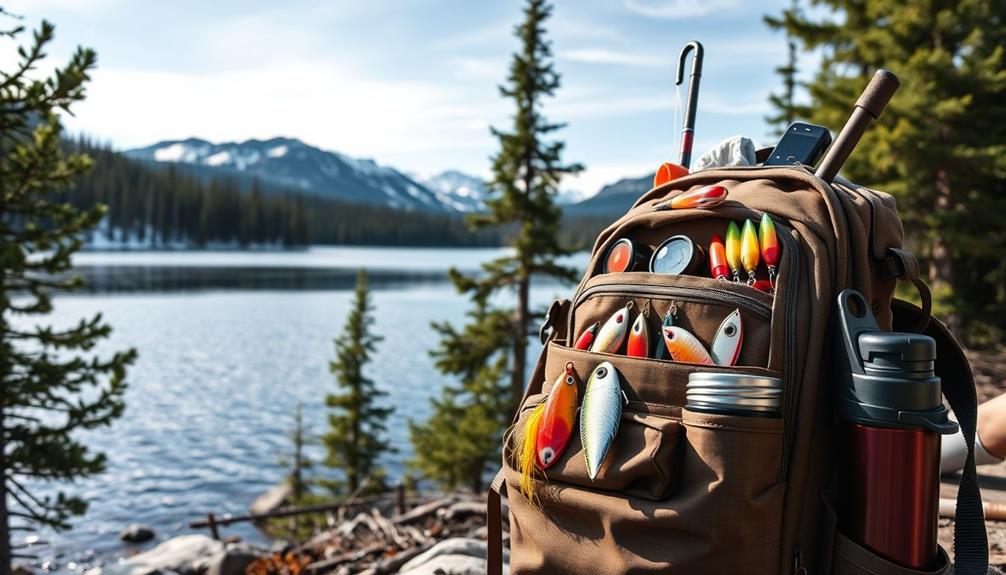Stockpile essential grains like rice, pasta, and flour for long-term survival. Guarantee proper storage to maintain freshness. Legumes such as pinto, black, navy, kidney, and chickpeas offer protein and fiber. Include beans, nuts, seeds, and canned goods for a diverse diet. Dehydrated fruits and vegetables give essential nutrients. Use mylar bags and airtight containers. Label items with dates for easy organization. Secure a clean storage space to prevent spoilage. Learn more about prepping essential foods for survival.
Key Takeaways
- Stockpile essential grains, legumes, and protein sources for energy and nutrition.
- Include dehydrated fruits and vegetables for essential nutrients and variety.
- Incorporate long-lasting, shelf-stable items like canned goods for emergencies.
- Utilize smart storage solutions like airtight containers and mylar bags.
- Diversify food supplies, monitor expiration dates, and maintain a clean storage space.
Essential Grains and Legumes
When preparing for long-term survival, make sure you stockpile essential grains and legumes for sustenance. Whole grains like rice, pasta, and flour are excellent choices due to their long-lasting nature when stored properly. These shelf-stable foods not only provide energy but also essential nutrients.
Legumes, such as various beans like pinto, black, navy, kidney, and chickpeas, are rich in both protein and fiber. When combined, grains and legumes offer a complete protein source crucial for sustained energy during survival situations.
Ensuring food safety is paramount when stockpiling these items for an extended period. Grains and legumes must be stored in a cool, dry place to prevent spoilage and maintain their nutritional value. Proper storage can greatly extend the shelf life of these foods.
Protein-Rich Foods

Stockpile protein-rich foods like beans, nuts, seeds, and legumes to guarantee a sustainable source of energy and nutrients for long-term survival. Including these plant-based proteins in your survival pantry ensures a well-rounded diet, essential for maintaining health during emergencies. Beans, nuts, seeds, and legumes aren't only rich in protein but also offer essential fats and micronutrients necessary for sustained energy levels.
Their compact nature makes them ideal for storage, lasting for years when properly preserved. By diversifying your protein sources, you can meet your body's nutritional requirements, enhancing physical endurance in challenging conditions. Remember, nuts and seeds, in addition to beans and legumes, are valuable assets in your stockpile, providing a mix of nutrients important for your long-term well-being.
Make sure to incorporate these protein-rich foods into your emergency food supply to be well-prepared for any survival situation.
Nutrient-Dense Fruits and Vegetables

Secure your long-term survival by incorporating nutrient-dense fruits and vegetables into your emergency food supply. These dehydrated options are packed with essential nutrients like vitamins, minerals, and fiber, important for maintaining health during emergencies.
To guarantee their longevity, store dehydrated fruits and vegetables in cool, dark places with moisture absorption techniques to extend their shelf life.
Including a variety of these items in your survival pantry not only assures a balanced diet but also supplements your essential nutrients intake for sustenance during survival situations.
Long-Lasting Shelf-Stable Items

Incorporate long-lasting shelf-stable items into your emergency food supply to enhance the longevity and versatility of your survival pantry. When preparing for long-term food storage, consider canned goods that have extended shelf lives. Proper storage methods, such as using mylar bags and oxygen absorbers, can help preserve the quality of these shelf-stable items.
Remember that factors like heat, light, moisture, pests, and oxygen can impact the expiration dates of your emergency food supplies. While canned goods can often remain safe to consume beyond their 'best by' date if the packaging is intact, it's essential to monitor for any signs of spoilage or foodborne illnesses.
Smart Storage and Organization

Properly storing and organizing your survival food supplies is essential for maintaining their quality and ensuring long-term viability in times of need.
Utilize airtight containers, mason jars, mylar bags, and 5-gallon buckets for efficient storage and preservation of survival foods. These containers help keep your supplies safe from moisture, light, and pests, extending their shelf life greatly.
Labeling food storage containers with purchase and expiration dates ensures easy identification and rotation of supplies. By implementing a proper labeling system, you can quickly locate items that need to be consumed first, reducing the risk of spoilage and waste.
Protect stored food from pests and spoilage by sealing containers tightly and keeping them off the floor in clean, dry areas. Maintaining a clean storage space and regularly inspecting your supplies for signs of pests or spoilage is essential for long-term sustainability in your stockpiling process.
Efficient organization of survival food supplies is key to preparedness and ensuring you have what you need when emergencies arise.
Frequently Asked Questions
What Food Is Good for Preppers Long Term Storage?
When prepping for the long term, stockpile grains like rice and pasta for carbs. Canned goods are key for nutrients. Nuts and seeds provide healthy fats. Honey and maple syrup last forever. Dehydrated fruits and veggies are nutrient powerhouses.
What Are 7 Perfect Foods for Survival?
When prepping for survival, consider stocking up on canned goods for long shelf life, grains for energy, beans for protein, nuts and seeds for essential fats, and dehydrated foods for lightweight, space-saving options.
What Survival Foods Last the Longest?
For the longest-lasting survival foods, focus on canned goods (up to 5 years), honey (indefinite shelf life), hard grains like wheat (30+ years), soft grains like rice (8 years), freeze-dried foods, and nuts, seeds, and dried fruits (years).
What Canned Foods Have the Longest Shelf Life?
When considering canned foods for long-term storage, opt for high-acid varieties like tomatoes and citrus fruits, which can last up to 18 months. Low-acid options such as meats and veggies are good for around 5 years if stored correctly.
What Are the Best Food Items to Stockpile for Long-Term Survival as a Prepper?
When building an essential items for survival pantry, it’s important to stock up on non-perishable goods like canned fruits and vegetables, dried beans and legumes, rice, pasta, and shelf-stable milk. Additionally, consider adding items such as peanut butter, honey, and protein bars for extra sustenance during long-term survival situations.
Conclusion
To sum up, stocking up on essential grains, protein-rich foods, fruits, and vegetables, as well as long-lasting shelf-stable items is vital for long-term survival. By smartly storing and organizing these items, you can guarantee you have the necessary supplies to sustain yourself during times of need.
Remember, preparation is key in facing uncertain times, so stockpile wisely and be ready for whatever challenges may come your way. Stay safe, stay prepared.










